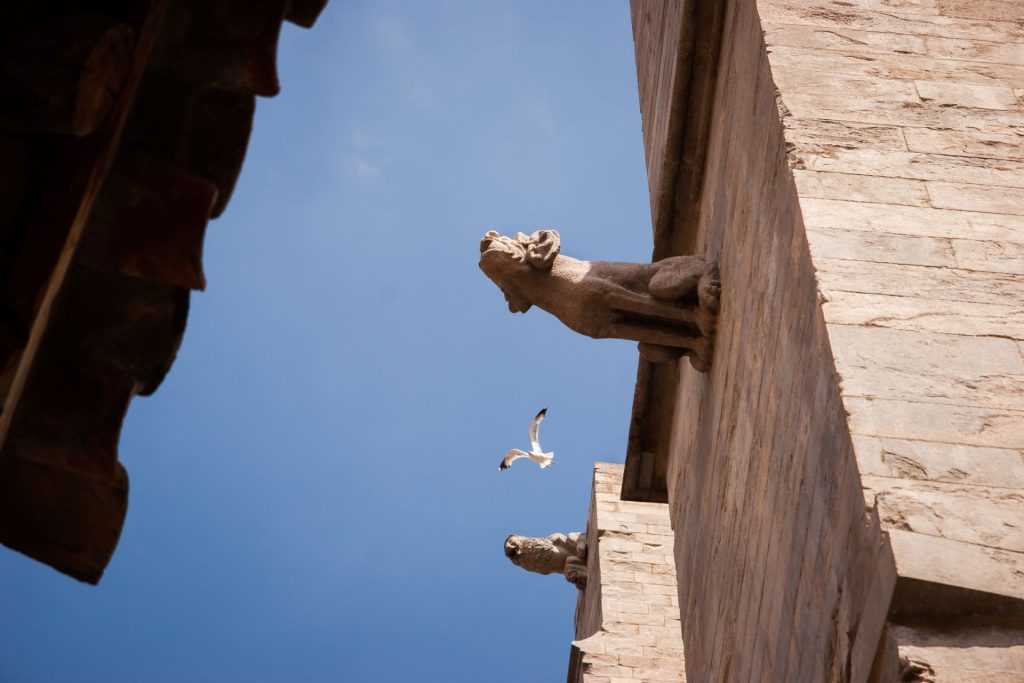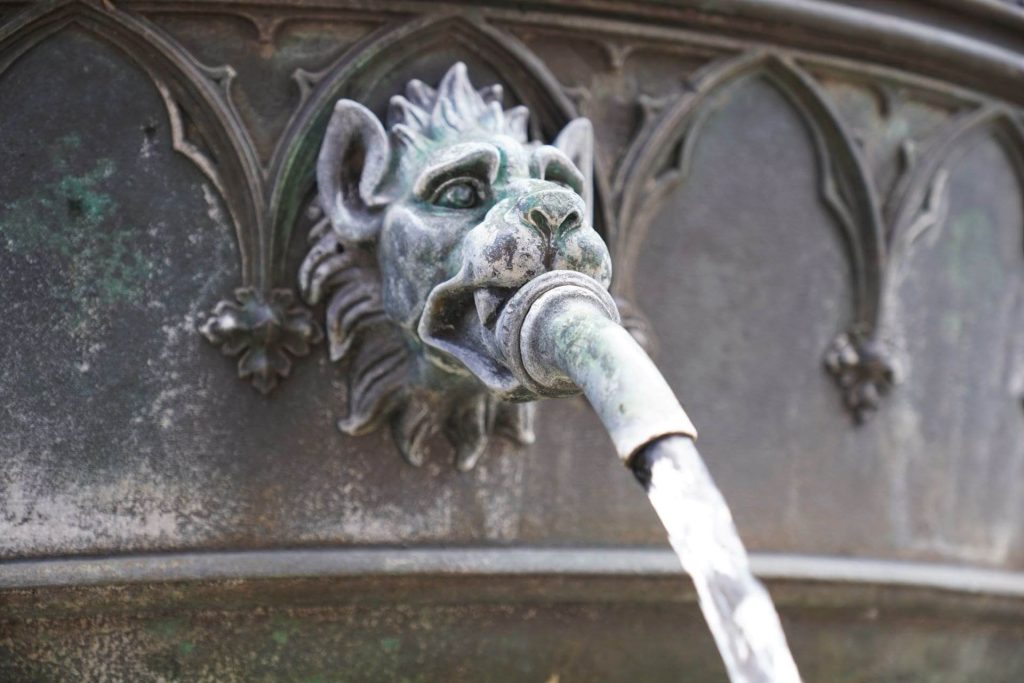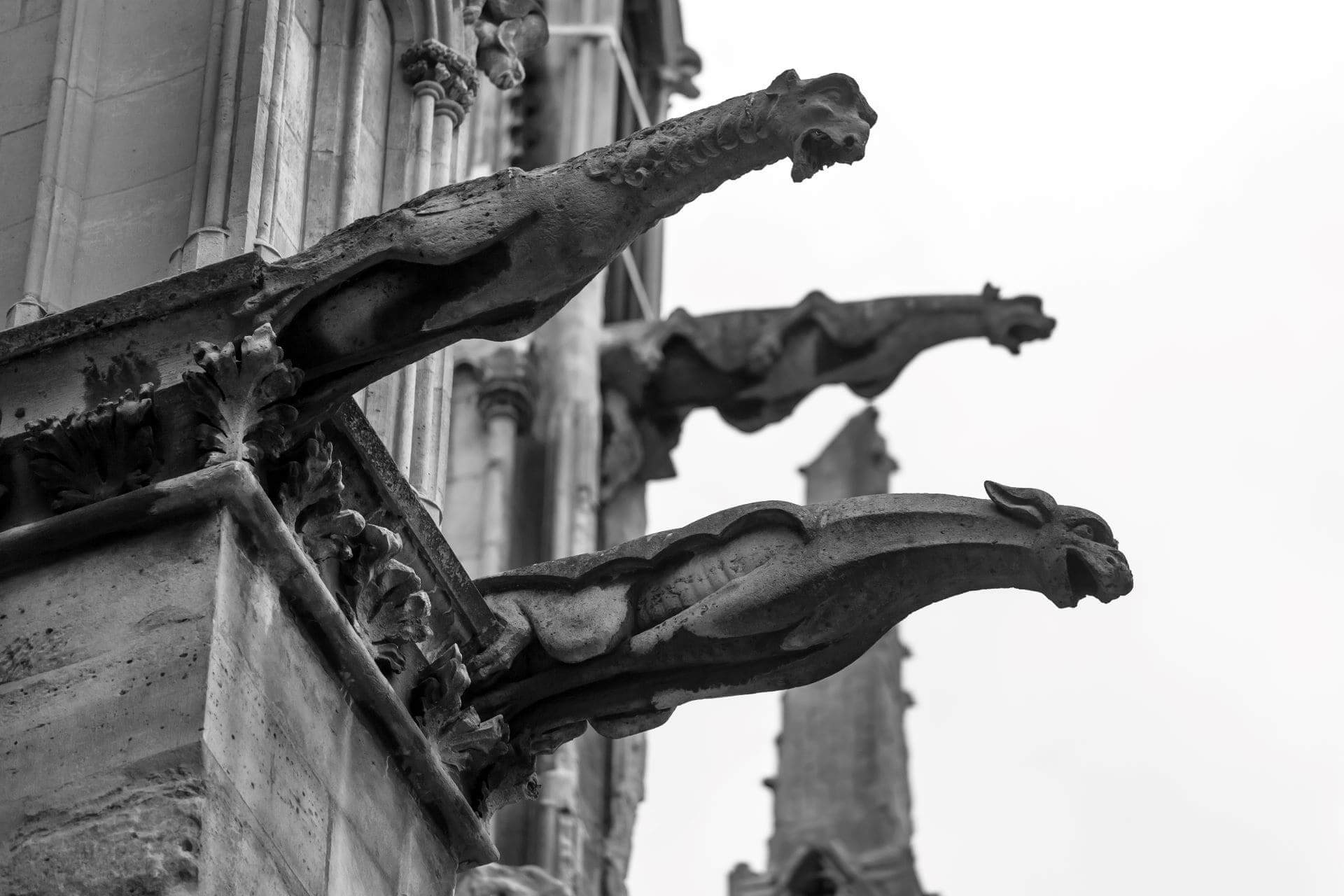When mentioning the word “gargoyle,” what immediately comes to mind for many people are sculptures of monsters that are found in antiquated buildings from Europe. This description is not that far off from what a gargoyle is, although it’s missing the part that mentions that gargoyles are a water spout whose design was developed from grotesques, a form of architectural ornamentation that uses the image of a mythical creature; and this design was inspired by the ideas of myths and religious beliefs during the time period of the 12th to 16th century. Perhaps you are interested in having a gargoyle in your residential real estate? If so, then this blog may offer you interesting information on gargoyles.
Grotesques in the 12th Century
Before we define what gargoyles are, it is relevant to first define its predecessor called the grotesque. A grotesque is a figure typically resembling a mythical creature purposed mainly for decoration. The design of the grotesque was invented around the 12th century when Gothic period architecture was prevalent. The use of grotesques was widely used in the Renaissance period, primarily as an additional ornamentation to frescoes.
Fresco is the term that was used in earlier history, commonly during the Renaissance period, to refer to a mural that is painted onto a wet plaster that has not dried yet. This process was done in order to have the painting become part of the wall’s finish or surface. A popular example of a fresco is the mural by Michelangelo on the ceiling of the Sistine Chapel. If you want to install a more antiquated style of design in your residential real estate, then perhaps you can consider having a fresco placed somewhere on your property.
What Is the Purpose of a Grotesque?
The primary purpose of a grotesque is simply as a decoration from the part of a building. Grotesques serve no contribution whatsoever to the structural integrity of a building and is simply a carving that is designed in the form of, what some would call a monster or demon. The design of the grotesque to take the form of a mythical creature, typically one that is associated with monsters or demons, is related to the spread of religion during the Medieval and Renaissance eras.
Given the design of grotesques, scholars note that grotesques serve as visual reminders of the division of the divinity from the earth. Grotesques, apart from serving as ornamentation, are said to be placed to ward off evil itself.

What Is a Gargoyle?
A gargoyle is a subcategory under grotesques that was developed later on around the 13th century. Similar to the appearance of grotesques, a gargoyle is designed in the form of a monstrous creature. A significant difference in the design of a gargoyle from the design of a grotesque, however, is that gargoyles seem to always have some form of elongated body that is pointed away from the structure it is connected to. This is intentional because a gargoyle is grotesque and is designed specifically to direct water flow away from the structure for varying cases that this blog will attempt to expound on.
The Origins of the Gargoyle
The term gargoyle has its etymology traced back to the French word “gargouille” whose meaning refers to “gullet,” or “throat,” and can be traced even further back to the French word “gar” as its root word, which means “swallow.” The origin of the gargoyle’s name has relevance because it is from the word that comprises the naming sense of the gargoyle that we can infer what gargoyles are purposed for in the first place.
As a form of grotesque, a gargoyle is carved in the shape of a mythical creature specifically designed to redirect flowing water on the exteriors of a building. In the design of gargoyles is the presence of a spout intentionally designed as a means to redirect rainwater coming down from the roof of a structure or building. One of the main differences that gargoyles have from grotesques is that the placement of gargoyles in structures makes the gargoyle a functional part of the structure instead of just being for pure ornamentation.
The Design of Gargoyles as Water Spouts
Excessive exposure of rainwater to the building materials, such as the walls of a building or the structure’s exterior in particular, can lead to long-term term damage to the structure. One solution to resolve this was the development of a grotesque with an elongated figure or body, which is the gargoyle. In carving the gargoyle, a path would be directed toward the back of the gargoyle from which the rainwater water would pass through the gargoyle and out its spout, which would typically be the mouth of the mythical creature.
In placing several gargoyles around the walls of a structure, a building would be equipped to deal with heavier rainfall by having several gargoyles acting as water spouts that divide the rainwater coming down the structure. By doing this, the structures of the time period where gargoyles were prevalent ended up minimizing the exposure of the mortar within its walls to rainwater which could prove to be detrimental. For the application of contemporary homes, such as residential real estate, gargoyles may be typically found next to fountains instead of on the walls of the house itself.

Gargoyles as a Unique Ornamentation
One could say that the people of the 13th to 16th century could have just installed plain water spouts to minimize the exposure of structure exteriors to rainfall. However, if you are to analyze the time period in which gargoyles are prevalent, it is not a coincidence that gargoyles were developed.
During the 13th to 16th century was when the Renaissance era occurred, a period of European artistic and cultural “rebirth;” and during this period, artistry was given high priority by much of European society. It was also during the 12th to 16th century that Gothic architecture was incredibly prevalent.
Gothic architecture, in particular, had a heavy focus on constructing large buildings built out of intricate architectural members such as arches, flying buttresses, and vaults. Although it is relevant to note that flying in buttresses in particular also served as a form of water spout given how flying buttresses are connected to a building and extend towards a direction away from a structure, similar to how gargoyles are designed, just in a more massive scale.
Read more: Iconic Italian Architecture Styles and Influences


